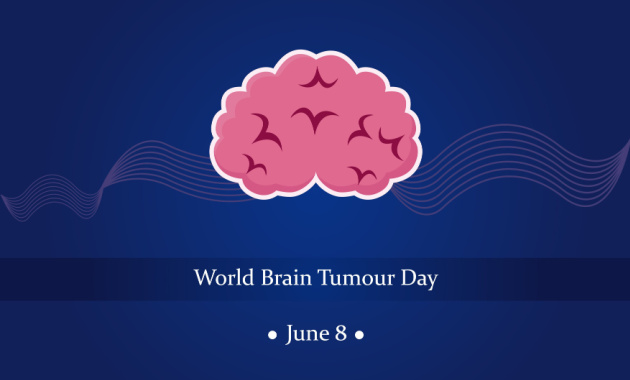
Brain tumors are complex conditions that can give rise to many myths and misconceptions. These misconceptions can lead to misunderstandings, fear, and stigma surrounding brain tumors. On this World Brain Tumor Day, it is crucial to debunk these myths and provide accurate information to promote awareness, understanding, and support for individuals affected by brain tumors. In this article, we will address common myths and present the corresponding facts to foster a better comprehension of brain tumors.
Myth 1: Brain tumors are always cancerous
Fact: While some brain tumors are cancerous (malignant), not all brain tumors are cancerous. There are various types of brain tumors, including both malignant and non-cancerous (benign) tumors. Benign tumors do not invade nearby tissues or spread to other parts of the body. However, both malignant and benign brain tumors require medical attention and appropriate treatment [1].
Myth 2: Brain tumors are always fatal
Fact: While brain tumors can be serious and life-threatening, not all brain tumors are fatal. The prognosis depends on several factors, such as the type, location, size, and grade of the tumor, as well as the individual’s overall health. With advancements in medical treatments, early detection, and multidisciplinary care, many individuals with brain tumors can achieve positive outcomes and enjoy an improved quality of life [2].
Myth 3: Brain tumors are always associated with headaches
Fact: While headaches can be a symptom of brain tumors, they are not always present. The symptoms of a brain tumor vary depending on its location and size. Other common symptoms may include seizures, changes in vision, balance problems, cognitive difficulties, and personality changes. It is important to consult a healthcare professional for a proper diagnosis if any concerning symptoms arise [3,4].
Don’t ignore the symptoms.
Consult experts today!
Myth 4: Brain tumors can be caused by mobile phones or other everyday devices
Fact: A study conducted by the American Cancer Society reports that using mobile phones for more than 13 years did not present any link with an increase in the risk of brain tumors. Extensive research conducted to date has not established a direct causal relationship between these devices and brain tumors. However, it is recommended to follow general guidelines for safe mobile phone use, such as using hands-free devices or speakerphones and limiting exposure to electromagnetic radiation [5].
Myth 5: Only older adults can develop brain tumors
Fact: While brain tumors are more commonly diagnosed in older adults, they can occur at any age, including in children and young adults. The National Cancer Institute states that the second most common cancer noticed in children is brain or Central Nervous System (CNS) cancer, which implies that brain tumors can occur in children too. Certain types of brain tumors are more prevalent in specific age groups, highlighting the importance of awareness and early detection across all age ranges[6].
Conclusion
World Brain Tumor Day, observed on June 8th, serves as a significant occasion to debunk myths surrounding brain tumors and provide accurate information. By dispelling misconceptions, we can promote understanding, and provide support for individuals and families affected by brain tumors. It is crucial to seek reliable medical advice, stay informed, and foster a compassionate and supportive environment for those facing the challenges of brain tumors. Together, we can work towards greater awareness, improved treatment options, and enhanced quality of life for individuals impacted by brain tumors.
(The article is written by Monalisa Deka, Senior Health Content Editor, and reviewed by Dr. Swati Mishra, Medical Editor)
References
1. American Association of Neurological Surgeons. Brain Tumor. Available online: https://www.aans.org/en/Patients/Neurosurgical-Conditions-and-Treatments/Brain-Tumors
2. National Brain Tumor Society. Available online: https://braintumor.org/brain-tumors/about-brain-tumors/brain-tumor-facts/
3. Hamilton W. Clinical features of primary brain tumors: A case–control study using electronic primary care records. Br J Gen Pract. 2007; 57(542): 695–699. Available online: https://www.ncbi.nlm.nih.gov/pmc/articles/PMC2151783/
4. Hadidchi S, Surento W, Lerner A, et al. Headache and Brain Tumor. Neuroimaging Clinics of North America, 2019; 29(2): 291-300. Available online: https://www.clinicalkey.com/#!/content/playContent/1-s2.0-S1052514919300085?returnurl=https:%2F%2Flinkinghub.elsevier.com%2Fretrieve%2Fpii%2FS1052514919300085%3Fshowall%3Dtrue&referrer=https:%2F%2Fpubmed.ncbi.nlm.nih.gov%2F
5. American Cancer Society. Available online: https://www.cancer.org/cancer/risk-prevention/radiation-exposure/cellular-phones.html#:~:text=Cell%20phone%20use%2C%20even%20for,any%20location%20within%20the%20brain.
6. National Cancer Institute. Available online: https://www.cancer.gov/types/childhood-cancers/child-adolescent-cancers-fact-sheet#how-common-is-cancer-in-children-and-adolescents